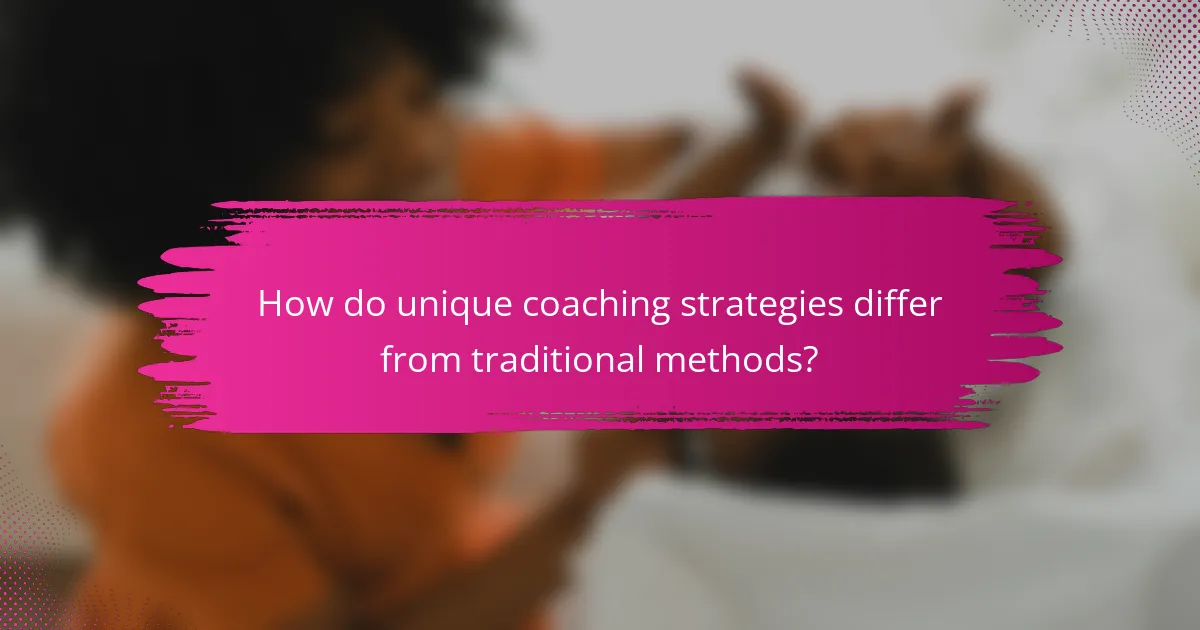Positive coaching strategies enhance mental development in youth sports by fostering resilience and confidence. Key principles include creating a positive environment, emphasizing effort over outcomes, and promoting self-reflection. Coaches focus on open communication and personalized feedback to support athletes’ growth. Understanding cultural differences further tailors these strategies to meet diverse needs effectively.

What are the fundamental principles of positive coaching strategies?
Positive coaching strategies focus on enhancing mental development in youth sports through supportive and constructive methods. Key principles include fostering a positive environment, emphasizing effort over outcome, promoting self-reflection, and encouraging open communication. These approaches help build resilience, confidence, and a love for the sport.
The importance of a positive environment cannot be overstated; it cultivates a safe space for athletes to learn and grow. Emphasizing effort over results encourages young athletes to value their hard work, fostering a growth mindset. Self-reflection allows athletes to assess their performance and identify areas for improvement, enhancing their learning process. Open communication ensures that athletes feel heard and supported, strengthening the coach-athlete relationship.
By implementing these principles, coaches can significantly impact the mental and emotional development of young athletes, preparing them for both sports and life challenges.
How does positive coaching impact mental development in youth?
Positive coaching significantly enhances mental development in youth by promoting resilience, self-esteem, and teamwork. Coaches who focus on positive reinforcement foster a growth mindset, encouraging young athletes to embrace challenges and learn from mistakes. This approach builds confidence and reduces performance anxiety. Research indicates that youth involved in positive coaching environments exhibit improved emotional regulation and social skills, crucial for their overall development. Additionally, positive coaching strategies cultivate a supportive atmosphere, enhancing motivation and enjoyment in sports, which further contributes to mental well-being.
What role does communication play in effective coaching?
Effective communication is vital in coaching as it fosters trust and understanding. Coaches who communicate clearly enhance athletes’ mental development by providing constructive feedback and encouragement. This approach promotes a positive environment, enabling youth to develop resilience and confidence. Active listening is another critical aspect, allowing coaches to address individual needs and adapt strategies accordingly. As a result, athletes feel valued and motivated, leading to improved performance and personal growth.
What techniques enhance coach-athlete communication?
Effective techniques to enhance coach-athlete communication include active listening, clear feedback, and open dialogue. Active listening fosters trust, allowing athletes to express concerns. Clear feedback provides specific, actionable insights that guide improvement. Open dialogue encourages questions, creating a collaborative environment. These strategies support mental development, enhancing performance and relationships in youth sports.
How can coaches provide constructive feedback?
Coaches can provide constructive feedback by focusing on specific behaviors and offering actionable suggestions. This approach fosters a growth mindset, encouraging athletes to improve.
Effective feedback should be timely and delivered in a supportive manner. For example, using the “sandwich” method—starting with a positive comment, followed by constructive criticism, and concluding with encouragement—can enhance receptiveness.
Additionally, involving athletes in the feedback process empowers them, promoting self-reflection and ownership of their development. Coaches should ask questions that guide athletes to identify areas for improvement, fostering critical thinking.
Establishing a culture of open communication ensures that feedback is perceived as a tool for growth rather than criticism. Regular check-ins and goal-setting sessions can further reinforce this positive dynamic.

What are the universal attributes of positive coaching?
Positive coaching universally emphasizes encouragement, constructive feedback, and a focus on personal growth. These attributes foster resilience, enhance teamwork, and build confidence in young athletes. Positive coaching strategies prioritize mental development, creating a supportive environment that nurtures both skills and character. This approach ultimately leads to improved performance and a lifelong love for sports.
How does fostering a growth mindset benefit young athletes?
Fostering a growth mindset benefits young athletes by enhancing their resilience and motivation. This mindset encourages them to embrace challenges, learn from failures, and persist in the face of setbacks. Studies show that athletes with a growth mindset demonstrate improved performance and greater enjoyment in their sport. Additionally, it promotes teamwork and positive interactions with coaches and peers, leading to a supportive environment. By developing a growth mindset, young athletes are more likely to achieve long-term success and personal growth in their athletic journey.
What strategies promote resilience in youth sports?
Positive coaching strategies significantly enhance resilience in youth sports. These strategies include fostering a growth mindset, promoting positive self-talk, and emphasizing effort over outcome. Coaches can create a supportive environment by encouraging athletes to embrace challenges and learn from setbacks.
Additionally, teaching emotional regulation helps young athletes manage stress and anxiety during competition. Providing constructive feedback reinforces their abilities and builds confidence. Regularly setting achievable goals allows athletes to experience success, further strengthening their resilience.
Incorporating team-building activities fosters camaraderie, creating a sense of belonging that enhances mental toughness. Coaches should also model resilience by demonstrating how to handle adversity, thus providing a powerful example for young athletes.

How do unique coaching strategies differ from traditional methods?
Unique coaching strategies prioritize mental development, contrasting with traditional methods that focus mainly on physical skills. These strategies emphasize emotional intelligence, resilience, and self-awareness, fostering holistic growth in young athletes. Traditional methods often overlook these aspects, leading to a narrower focus on performance metrics. By integrating positive reinforcement and individualized feedback, unique strategies cultivate a supportive environment that enhances both mental and athletic development. This approach not only improves performance but also promotes lifelong skills such as teamwork and leadership.
What innovative approaches can enhance mental development?
Positive coaching strategies can significantly enhance mental development in youth sports. Techniques such as goal-setting, positive reinforcement, and fostering a growth mindset are effective.
Goal-setting helps athletes focus on specific, achievable objectives, promoting motivation and self-discipline. Positive reinforcement encourages persistence and resilience by acknowledging effort and improvement.
Fostering a growth mindset teaches young athletes that abilities can be developed through dedication, leading to greater confidence and a willingness to embrace challenges.
These strategies not only improve performance but also contribute to overall mental well-being, equipping youth with skills that extend beyond sports.
How can positive reinforcement be effectively utilized?
Positive reinforcement can be effectively utilized by consistently acknowledging and rewarding desired behaviors. This strategy enhances motivation and encourages mental development in youth sports. For example, coaches can provide verbal praise, small rewards, or recognition during practice. These positive feedback mechanisms build confidence and improve performance. Incorporating positive reinforcement creates a supportive environment that fosters growth and resilience in young athletes.
What are examples of positive reinforcement techniques?
Positive reinforcement techniques in youth sports include praise, rewards, and constructive feedback. These strategies encourage athletes to develop skills and maintain motivation.
1. Verbal praise: Acknowledging effort and achievements boosts confidence.
2. Tangible rewards: Small prizes or certificates can motivate continued participation.
3. Positive feedback: Offering specific suggestions for improvement reinforces learning.
4. Goal setting: Establishing achievable objectives fosters a sense of accomplishment.
5. Peer recognition: Encouraging teammates to celebrate each other’s successes builds camaraderie.
These techniques support mental development and create a positive sports environment.

What are some rare attributes of successful coaching practices?
Successful coaching practices may exhibit rare attributes such as personalized feedback, emotional intelligence, and adaptability to individual athlete needs. These traits enhance mental development, fostering resilience and confidence in youth sports. Coaches who integrate mindfulness techniques, such as visualization and breathing exercises, also stand out. These unique approaches contribute to a holistic development strategy, differentiating effective coaches from their peers.
How can emotional intelligence shape coaching effectiveness?
Emotional intelligence significantly enhances coaching effectiveness by improving communication and fostering trust. Coaches with high emotional intelligence can better understand athletes’ emotions, leading to tailored strategies that support mental development. This personalized approach cultivates a positive environment, encouraging youth to express themselves and develop resilience. As a result, athletes are more likely to engage fully and thrive in their sports journey.
What uncommon methods can be used to build team cohesion?
Uncommon methods to build team cohesion include creative team-building exercises, mentorship pairings, and collaborative goal-setting. These strategies foster deeper connections and enhance communication among team members. For example, using art or music as a medium can encourage expression and teamwork in a unique way. Additionally, implementing regular feedback loops can build trust and accountability within the team.

How can cultural differences influence coaching strategies?
Cultural differences can significantly shape coaching strategies by influencing communication styles, motivation techniques, and team dynamics. Understanding these variations helps coaches tailor their approaches to better meet the needs of diverse youth athletes. For instance, collectivist cultures may emphasize teamwork and community, while individualistic cultures might focus on personal achievement. This awareness fosters mental development and enhances the overall effectiveness of coaching in youth sports.
What regional variations exist in youth sports coaching?
Regional variations in youth sports coaching reflect cultural attitudes, available resources, and community engagement. For example, in the United States, emphasis is often placed on competitive success, while in Scandinavian countries, the focus leans toward enjoyment and participation. Coaching strategies may also differ based on the popularity of sports; soccer coaching in Europe emphasizes teamwork and skill development, while American football coaching prioritizes strategy and physical conditioning. These variations influence how coaches foster mental development in young athletes, shaping their approach to motivation, resilience, and teamwork.

What are the best practices for implementing positive coaching strategies?
Positive coaching strategies emphasize encouragement and skill development in youth sports. To implement these strategies effectively, coaches should focus on fostering a positive environment, setting clear goals, and providing constructive feedback.
1. Encourage a growth mindset by emphasizing effort over outcome.
2. Set specific, achievable goals for athletes to enhance motivation.
3. Provide regular, positive reinforcement to build confidence.
4. Foster open communication to understand athletes’ needs and concerns.
5. Model positive behavior to inspire athletes both on and off the field.
6. Create a supportive team culture that values collaboration and respect.
What common mistakes should coaches avoid?
Coaches should avoid common mistakes that hinder positive mental development in youth sports. These include focusing solely on winning, neglecting individual player needs, failing to communicate effectively, and not fostering a supportive environment. Prioritizing player growth and enjoyment enhances overall performance.
How can coaches measure the effectiveness of their strategies?
Coaches can measure the effectiveness of their strategies through feedback, performance metrics, and mental development assessments. Regular evaluations of athletes’ skills and emotional well-being provide insights into strategy impact. For example, tracking improvement in teamwork and resilience can indicate positive coaching effectiveness. Additionally, surveys can gauge athletes’ perceptions of their growth, fostering an environment of open communication.
What expert insights can enhance coaching practices?
Positive coaching strategies enhance youth sports by prioritizing mental development, fostering resilience, and building confidence. Coaches can implement techniques like positive reinforcement, growth mindset cultivation, and goal-setting to support athletes’ psychological growth. Research indicates that athletes who receive constructive feedback demonstrate improved performance and greater enjoyment in their sport. Additionally, creating a supportive team environment encourages collaboration and social skills, which are critical for personal development. By focusing on these strategies, coaches can significantly impact young athletes’ mental and emotional well-being.


